Houseplant Care for Beginners: Get Started with These Easy Tips
We understand the stress and anxiety that comes with your first houseplant. You are probably worried that your plant might die or are confused about how to care for houseplants. Our houseplant care for beginners guide will help you discover how easy it can be to care for houseplants. With ideal indoor growing conditions, most houseplants flourish and add a touch of elegance and glamor to your space. Read on to discover more.
Houseplant care for beginners

Different houseplants have varying needs. The key is identifying the type of plant you have to determine what it needs. Taking care of houseplants is easy under ideal conditions. Here are several houseplant care tips you can use to ensure your houseplant remains healthy and attractive.
Provide your plant with adequate lighting

Houseplants require adequate lighting to survive. Some plants need more lighting than others. Most houseplants thrive in bright indirect sunlight indoors while others need a few hours of direct sunlight to maintain their beautiful foliage. When choosing a spot for your plant indoors, ensure the location receives enough sunlight. Most plants become stretchy and grow slowly without enough lighting.
Grow your plant in the right type of soil
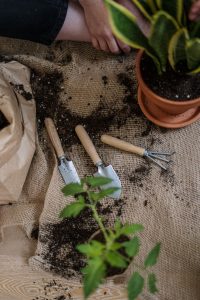
Houseplants thrive in fast-draining soil that does not retain excess moisture. Too much moisture leads to waterlogging that causes root rot. When your plant’s roots begin to rot, the plant will eventually die. Some houseplants like succulents and cacti are prone to root rot and need loose well-draining soil to survive.
Most tropical plants require fast-draining soil that retains moisture to flourish. Some houseplants thrive in acidic soil while others do well in neutral soil. The trick is in identifying what type of plant you have in your home.
Houseplant care for beginners: Water your plant regularly

While all houseplants need water to survive, water requirements vary from plant to plant. Some plants need more water than others to survive. Most cacti and succulents are drought-resistant and easy-care houseplants that need little water to survive. On the other hand, most tropical plants need regular watering to thrive.
Avoid overwatering your houseplant to prevent root rot and other fungal problems. When watering your plant, ensure excess water drains from the soil completely. Keep the soil lightly moist but not too wet. You might have to water your houseplant more during the summer and less during winter.
Re-pot overgrown plants
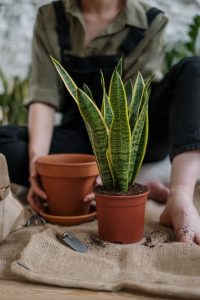
Another useful houseplant care tip you should consider is repotting your plant occasionally. Your plant will outgrow its container at some point and will require a bigger one to thrive. Some houseplants grow slowly and might be pot-bund for a while. Other plants are fast-growing and require repotting often.
When your houseplant outgrows its pot, you might notice roots protruding from the drainage holes or above the soil’s surface. In this case, you should use a larger container to re-pot your plant.
The pot should just be slightly larger and not too big. A large container might retain moisture that might lead to root rot. When repotting your plant, use fresh potting soil to promote healthy growth.
Houseplant care for beginners: Feed your plant regularly
Another houseplant care for beginners tip you should follow is fertilizing your plant regularly. Some houseplants are heavy feeders while others can thrive without feeding. Most cacti and succulents require minimal feeding to thrive. Some tropical plants need regular feeding to flourish.
You can use compost, liquid fertilizer, or slow-release pellets to feed your houseplant. The ideal time to feed your plant is during the growing season to encourage healthy growth. Follow label guidelines to determine the amount of fertilizer you should use to feed your houseplant.
Monitor humidity and temperature indoors

Houseplant care for beginners includes monitoring humidity levels and temperatures in your home. Some houseplants thrive in warm and humid conditions while others do just fine in moderate temperatures and dry conditions. Identify the type of houseplant you have before adjusting humidity and temperature conditions.
Most cacti and succulents dislike humidity and keeping them away from humid areas is paramount. Several topical houseplant varieties need high humidity levels to thrive. You can use a humidifier to increase humidity indoors. Most houseplants don’t tolerate low winter temperatures and will survive in room temperature conditions.
Dust your houseplants

Another way to care for houseplants is by constantly dusting them. Most houseplants collect dust over time. Your plant might struggle to absorb enough light when too much dust accumulates on its leaves. Dust also makes your plant look unattractive. Try to regularly dust your houseplant with a soft brush or use a soft damp cloth to gently wipe the dust off.
Occasionally prune your houseplants

Houseplant care for beginners involves pruning your plant regularly to keep it in good shape. Most plants overgrow and become leggy without pruning. Trimming helps maintain the aesthetic appeal of your plant and encourages more growth.
You can prune your plant during the growing season to encourage a fuller and bushier plant. Remove dead and damaged leaves or branches to keep your plant looking ravishing and gorgeous. You can even propagate new plants when pruning using stem cuttings.
Inspect your indoor plants for pests and diseases

Another important houseplant care for beginners tip is inspecting your plant for common pests and diseases. Indoor plants are prone to diseases and attacks by pests such as mealybugs, aphids, spider mites, etc. Your plant can develop fungal diseases due to overwatering and excessive humidity.
Regularly inspect your plant for pests and get rid of them before they damage your plant permanently. You can use pesticides or insecticidal oils to get rid of pests. Also, examine your houseplant for diseases such as leaf spots. Fungicides are effective against fungal diseases and you can use them to save your plants.
Easy care houseplants for beginners
Some houseplants are demanding more than others. The best houseplants for beginners are resilient and low-maintenance. Under ideal indoor conditions, it is easy to care for houseplants. Below are several easy-care houseplants that you can grow in your home.
Aloe plant
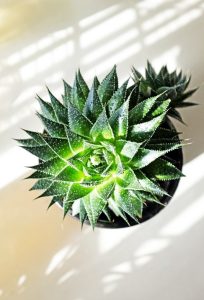
The Aloe plant is one of the best houseplants for beginners that requires minimal attention to thrive. Aloe houseplant care for beginners involves watering your plant sparingly. Aloe plants are drought-resistant and can survive with infrequent watering. Provide your Aloe plant with adequate lighting and warm temperatures.
Snake plant
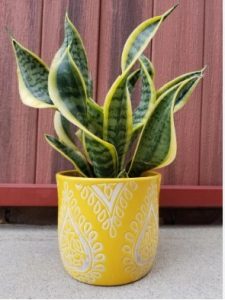
Another easy-are houseplant that you can grow indoors is the Snake plant. This forgiving houseplant can tolerate neglect and is almost hard to kill. Snake houseplant care involves moderate watering, indirect bright light, fast-draining soil, and moderate temperatures. This striking plant contrasts nicely with other houseplants and adds a natural feel to your home.
Croton plant

If you are looking for a colorful easy care houseplant, Croton would be a perfect selection. This hardy houseplant adds color to any dull corner with its beautiful foliage. Croton thrives with moderate watering, enough light, and high humidity.
Water your Croton plant when the top inch of the soil is dry and use a humidifier to increase humidity indoors. Avoid moving your Croton plant around. This plant might lose its leaves when you constantly move it. Keep indoor temperatures above 60 degrees to prevent frosting.
Pothos
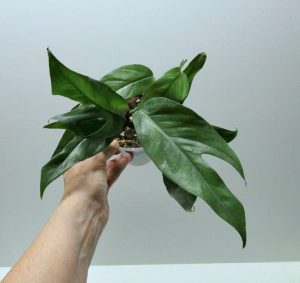
Pothos is a fast-growing low-maintenance plant that you can easily care for. This eye-catching houseplant would look lovely in a hanging basket indoors. You can pick your favorite plant from the different Pothos varieties available online. Pothos thrives in medium to bright indirect sunlight. Water your plant moderately to keep it looking its best.
Peace Lily

Peace Lily is one of the big houseplants that are easy to take care of. This wonderful low-maintenance plant brightens up any dull room with its colorful flowers and bold foliage. Peace Lily flourishes in bright indirect light, preferably near a south-facing window.
This plant would rather be too dry than too wet. Therefore, you should water your Peace Lily moderately to prevent root rot. Plant your Peace Lily houseplant in well-draining soil and feed it at least twice during the growing season.
Caring for houseplants doesn’t have to be a stressful task. Houseplant care for beginners involves providing ideal growing conditions for your plants. You only need to regularly water your plant, provide ample lighting, use the right type of soil, occasionally dust your plant, and watch out for pests and diseases. You can begin with some of the easiest plants like the Snake plant, Croton plant, Pothos plant, Peace Lily plant, and others. For more houseplant care assistance, don’t hesitate to get in touch with us today.

